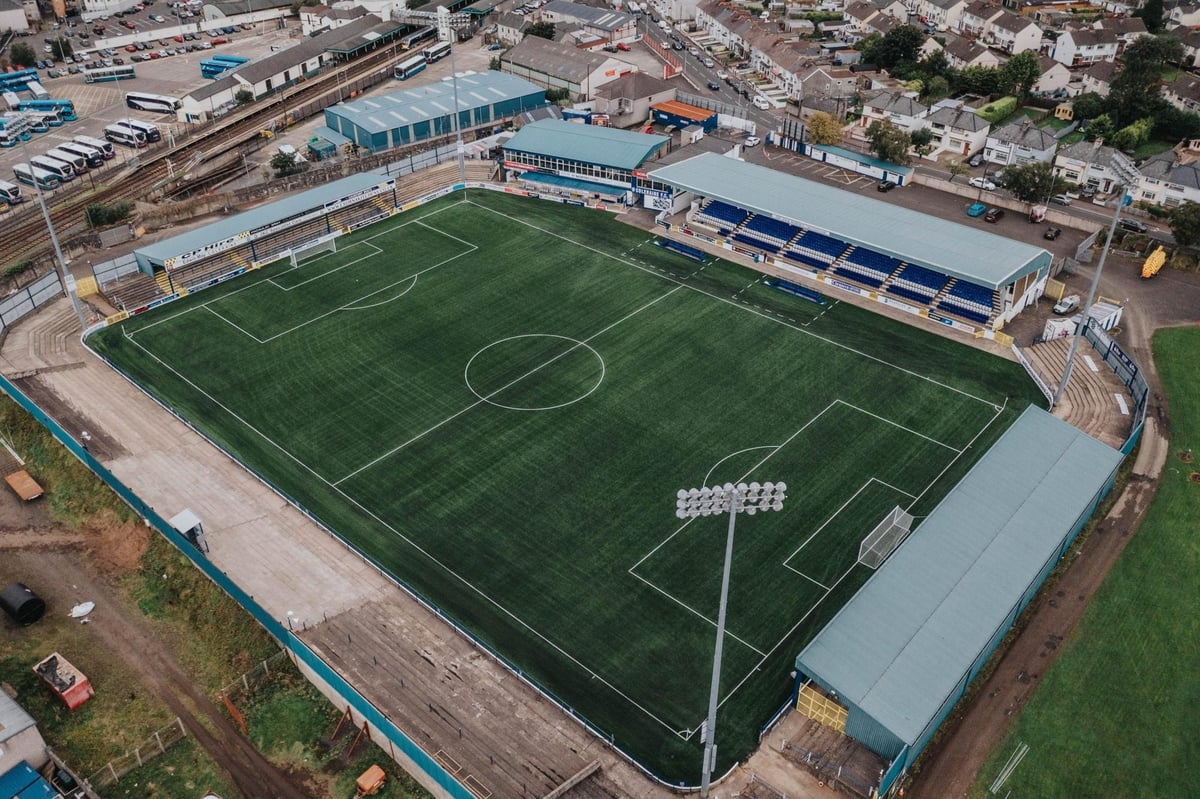Criticism over ‘inadequate and Belfast-centric’ funding for football clubs – with particular criticism of Coleraine exclusion
By Adam Kula and PA
Copyright newsletter

The TUV said the total sum involved – £36.2m – “falls far short of what is needed”, given that the pot of cash was originally announced 14 years ago and has not been adjusted for inflation in the years since. Meanwhile East Londonderry DUP MLA Maurice Bradley voiced concern that the list of clubs is too Belfast-centric after Coleraine FC and Institute lost out on any funds to improve their facilities, with the SDLP also complaining that League of Ireland club Derry City FC had not made the cut either. Today, the Department for Communities, overseen by DUP minister Gordon Lyons (who took it over from Sinn Fein in February 2024), announced that 20 clubs have had their bids for funding moved on to the next stage. The funding pot is called the Northern Ireland Football Fund Performance Programme. It was formerly known as the Sub-Regional Stadia Programme when it was announced in 2011, around the same time as the separate funding for Casement Park, Windsor Park, and Ravenhill was unveiled. Tier one clubs had requested funding of under £1.5m. It has now been revealed that the successful applicants were: Armagh City, Ballymacash Sports Academy, Lisburn Distillery, Queen’s University, and Rathfriland Rangers. Clubs who applied for a tier two grant had requested funding for the value £1.5m to £6m. Successful applicants for this tier were: Ballinamallard United, Ballymena United, Banbridge Town, Bangor, Carrick Rangers, Dergview, Dungannon Swifts, Glenavon, Larne, Lisburn Rangers, Loughgall, Newry City and Oxford Sunnyside. Tier three clubs asked for more than £6m. There were two successful applicants: Cliftonville and Glentoran. The department said it will now “work closely with the 20 projects on business case development and carry out detailed due diligence checks”. Mr Bradley told northernirelandworld.com that “to say that I am disappointed is an understatement,” adding: “Once again the Coleraine area has missed out on government funding – so much for regional balance. “Very few clubs outside of the Belfast area have been successful. I just don’t know what more we can do… “I will be asking for a meeting with department officials to find out what criteria was not met.” TUV party chairman and Causeway councillor Allister Kyle said he is “gutted” Coleraine have lost out, adding: “To hear the biggest provincial club in the country haven’t been successful in receiving any of it is not just disappointing but deserving of a full explanation.” He added: “Today’s announcement comes after 14 years. It is therefore highly disappointing that there isn’t a penny more in the £36.2m fund than what was ring-fenced in 2011. “No account has been taken of inflation and football fans will watch with interest to ensure a similar approach is taken to Casement Park. “There is massive need throughout the Irish League for upgrading facilities including at grassroots level and in the women’s game. This funding falls far short of what is needed.” According to the Bank of England’s inflation calculator, the sum of £36.2m announced in 2011 would be worth £53.8m today if it were adjusted for inflation. SDLP MLA Mark Durkan said: “There will be bitter disappointment in Derry and across the north west at the failure to award a single penny to Derry City FC. “Institute FC, who are desperately hoping to secure a new home in our city, and Coleraine FC, also in need of funding, were excluded – while most of the money was awarded to clubs in the greater Belfast area… “To put it bluntly, this funding process has been an utter farce from start to finish.” Independent MLA Claire Sugden said the funding announcement was a “setback” for Coleraine FC. “To see these plans delayed again is a setback for the club and for everyone who values the role it plays in our community.” During the period since the funding pot was announced in 2011, Stormont has been collapsed for five years. In his statement announcing the funding today, minister Lyons had said: “Together we are moving forward to achieve real change for the benefit of players, fans and local communities. And we are in this for the long haul. “It is clear that the need and demand at club level exceeds the current available budget of £36.2m. “I will be seeking the fair and equitable funding which is due after years of delays during which time capital construction costs have soared… “I have visited many grounds during my time as minister and have seen the level of need first-hand. “I know that some will be disappointed today. But this is not the end of the journey. “I give my commitment today to stay with you and continue to seek further funding to meet the evidenced need.” Asked to respond to the criticism of Thursday’s awards announcement, and why it has taken 14 years to progress the funding this far, the Department for Communities referred the News Letter to the answers the minister gave in a Q&A with journalists earlier in the day. He said “what has driven me is 14 years of dither and delay where nothing happened,” adding: “That’s why the last 14 months have been completely different. And I want to make that change and I want to make that impact. And I hope most people will understand that.” He also said that there had been a “scoring process” for clubs and that, for some, their case had been “not best articulated” or the evidence was “not there” to allow them to approve the funding.



